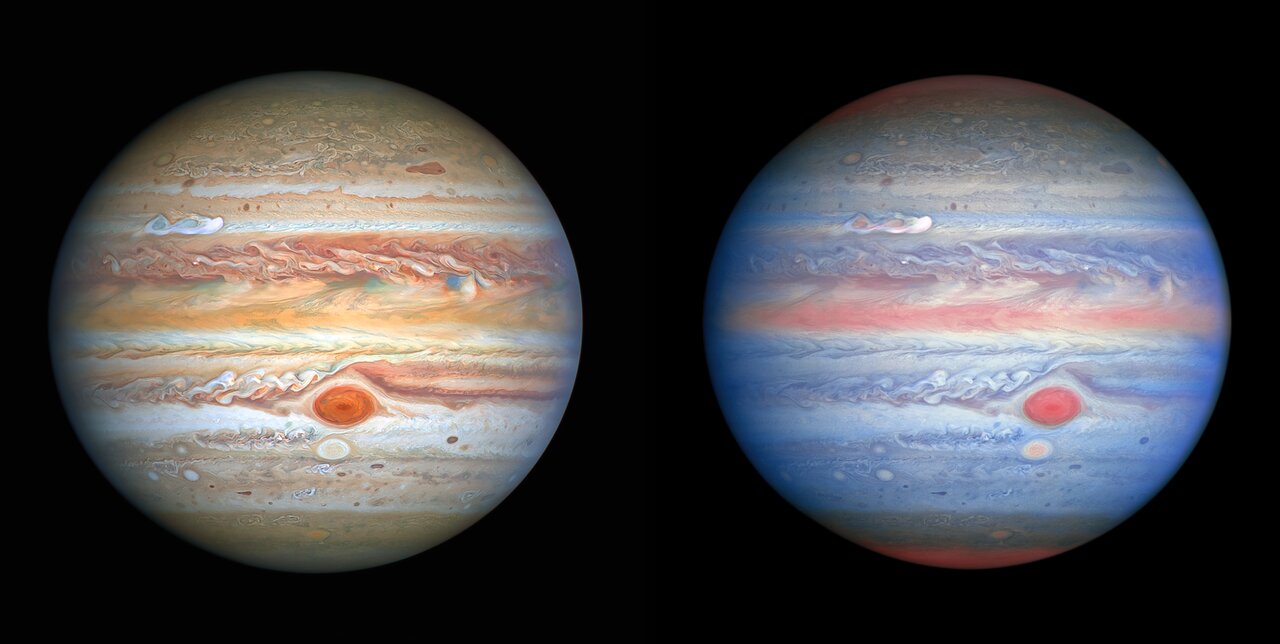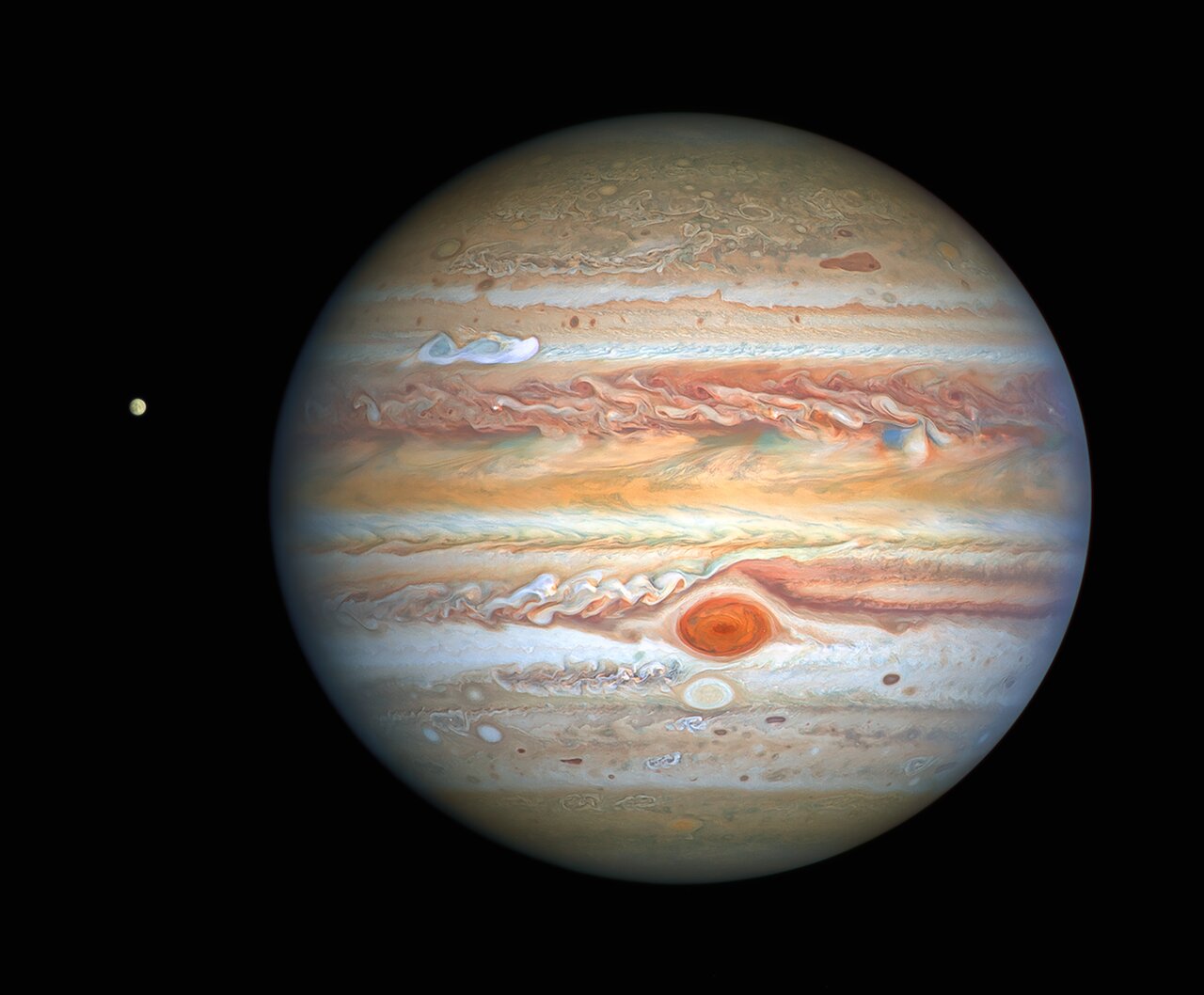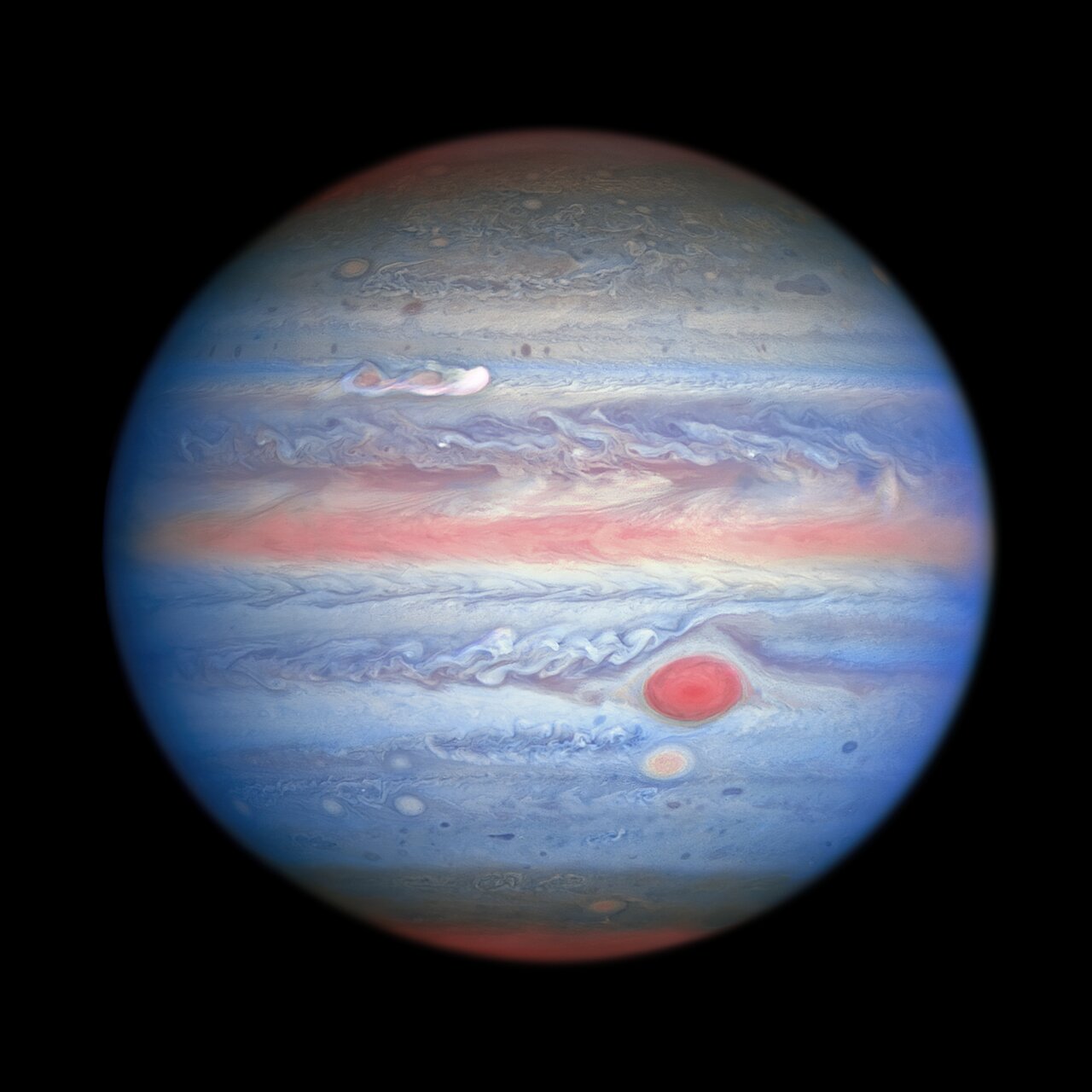BY
A striking image of Jupiter captured by the NASA/ESA Hubble Space Telescope on Aug. 25 illuminates some fascinating meteorological changes in the giant planet’s atmosphere, and on the surface.
Not only is the planet’s famous Great Red Spot shrinking in size, but cloud movement in the northern hemisphere indicates that a major storm is brewing.
A stunning photo shot in visible light was obtained by Hubble from a distance of 406 million miles, states NASA. The near-infrared imaging and ultraviolet views highlight the distribution of meteorological phenomena like never before, giving researchers an entirely new perspective on Jupiter’s evolution.

This latest visible-light image of Jupiter was taken by the Hubble Space Telescope on Aug. 25, 2020, when the planet was 406 million miles away from Earth. (NASA, ESA, A. Simon (Goddard Space Flight Center), and M. H. Wong (University of California, Berkeley) and the OPAL team.)
The Great Red Spot, the most famous of Jupiter’s storms, rotating counterclockwise, is estimated to have been raging for upward of 350 years, says Business Insider.
Currently, the Great Red Spot measures 9,818 miles in diameter, but scientists believe that it is shrinking. For context, it is still large enough to swallow the planet Earth, which measures 7,917.5 miles in diameter.
A brewing storm in the planet’s northern hemisphere, however, has piqued curiosity for its sudden appearance and ferocious speed. Erupting on Aug. 18, 2020, at mid-latitudes, this bright white rolling storm, trailed by anticlockwise cyclones, has gathered speeds of around 350 miles per hour.

Hubble’s sharp view of Jupiter is giving researchers an updated weather report on the monster planet’s turbulent atmosphere, and a view of Jupiter’s icy moon, Europa. (NASA, ESA, A. Simon (Goddard Space Flight Center), and M. H. Wong (University of California, Berkeley) and the OPAL team.)
According to Hubble‘s website, this storm may have more structure behind it than previous weather disturbances on planet Jupiter. The small plumes trailing the head of the storm suggest that this may be the beginning of a longer-lasting tumult in the northern hemisphere, comparable to the Great Red Spot.
Scientists also suspect that the storm’s embryonic formation may belie its age; this weather disturbance could have been brewing for some time. NASA noted that it was “perfect” timing to capture the formation of this northern hemisphere storm structure in its early stages.

This multi-wavelength image in ultraviolet, visible, and near-infrared light of Jupiter obtained by the NASA/ESA Hubble Space Telescope on Aug. 25, 2020, is giving researchers an entirely new perspective on the giant planet. (NASA, ESA, A. Simon (Goddard Space Flight Center), and M. H. Wong (University of California, Berkeley) and the OPAL team.)
Another notable storm in the planet’s southern hemisphere, below the Great Red Spot and about half its size, Oval BA or “Red Spot Jr.,” appears to be changing in color from white to red.
Oval BA, younger than the Great Red Spot, formed in the late 1990s from three smaller storms, and its cumulative force has been growing ever since then. Scientists first noticed that the storm was changing color in 2006, and according to Hubble’s photographic monitoring over the years, its color regularly fluctuates between white and red.
In one rendering of Hubble’s extraordinarily detailed image from Aug. 25, Jupiter’s ice moon, Europa, can be seen crisply illuminated next to the giant planet.
Europa is believed to be concealing a liquid ocean under its icy crust. For this reason, according to Hubble’s website, the moon is one of the major targets in the search for “habitable worlds” beyond our planet.
The ESA’s anticipated 2022 mission, JUpiter ICy moons Explorer, hopes to explore Jupiter and three of its largest satellites, Ganymede, Callisto, and Europa.
We would love to hear your stories! You can share them with us at [email protected]
Republished with Permission The Epoch Times SUBSCRIBE
Get Citizensjournal.us Headlines free SUBSCRIPTION. Keep us publishing – DONATE




